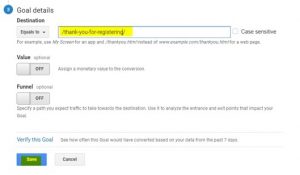— April 5, 2018

In “The Tortoise and the Hare” Aesop describes a race between a slow-moving tortoise and a fast-moving over-confident hare. Despite the skittish hare racing ahead at first, his slow-but-steady competitor arrives at the finishing line ahead of him.
This widely-told ancient fable has been used to make the case for “more haste, less speed”, to support the biblical observation that “the race is not to the swift” and to reinforce the virtues of persistence and perseverance.
The lessons can be applied to many aspects of life – not least of which the sales process. It’s my observation that many so-called “sales closing problems” actually have their roots in “opening problems” and the failure to do sufficient upfront discovery…
As Mike Kunkle points out in his recent LinkedIn commentary, whenever we fail to invest in a proper upfront diagnosis of our customer’s situation, our sales campaign is very likely to stall or go off the rails later on.
I believe that in any complex sales situation there is a compelling case for hastening slowly, for conducting a detailed early-stage discovery exercise, and for resisting the temptation to prematurely propose our solution even if we are being pressed to do so by the customer.
diagnosing before we prescribe
There are clear parallels with the medical profession: an apparently simple condition such as a headache or muscle pains can often act as an indicator of a deeper and much more serious health problem.
If a doctor rushes to a premature conclusion, fails to diagnose other less obvious but more significant indicators, and simply prescribes a couple of aspirin, they could put the patient’s long-term health or even life at risk.
Any doctor adopting such a careless approach could be properly accused of medical malpractice, and the same applies to the sales environment. Any time we rush ahead and propose a “solution” without fully understanding the customer’s true situation, we are guilty of sales malpractice, and we run the same risk of causing long-term harm to the business health of both our customers and ourselves.
Just as patients (despite all the information available to them over the internet) are not always capable of accurate self-diagnosis, our customers – despite access to overwhelming volumes of online information – are not always capable of seeing the wood for the trees.
drilling into the need behind the need
And it’s not just bad sales practice to simply respond to what our customer thinks they are suffering from or need – it dramatically reduces our chances of establishing genuine differentiation against all the other options the customer may be considering.
When all solutions look the same, our customer is likely to choose the simplest/cheapest/easiest option or decide to do nothing. And to return to the medical analogy, claiming to have a better drug isn’t very helpful if we’re actually treating the wrong problem.
We need to drill into the need beyond the need. In complex B2B sales, discovery is the critical foundation upon which all the other elements of a successful sale must be built. If our foundations are weak or shaky, the entire edifice of our sales campaign could collapse at any time – and probably will.
building strong foundations from the start
It’s far easier to build strong foundations at the start of the sales process, rather than attempt to shore them up later when it becomes apparent that they are too weak to support our solution proposal.
I’ve written before about the critical role that discovery plays in complex B2B sales. But the essential lesson is that we cannot afford to rush it. The early stages of a sales engagement give us an opportunity to pursue lines of inquiry that we may not be able to return to later.
The questions we choose to ask, the insights we choose to share and the stories we choose to tell serve to shape the entire subsequent direction of our sales campaign. They can make the difference between pursuing a promising path or rushing headlong towards a dead end.
They can help us determine whether the customer has a compelling reason to act, to help shape their vision of a solution and decision process and to establish whether we have a strong and distinctive problem-solution fit.
They can help us to avoid solving the wrong problem, dealing with the wrong people and wasting our time pursuing opportunities that were never real or prospects who were never likely to become profitable customers.
They can help us avoid wasting both our own time and our that of our prospective customers. They can help us stumbling across showstopper issues late in the process that we wish we had (and could have) discovered far earlier in the process.
But when we invest in discovery, we set the scene for an effective and productive sales process that will soon overtake all those “hare” sales people that have rushed ahead but subsequently stalled. And when we invest in discovery, we can accurately qualify out bad opportunities far earlier in the sales cycle.
Great discovery delivers better outcomes for everyone involved. It’s sometimes tempting to rush the process. It’s sometimes tempting to accede to an impatient customer’s request that we deliver them a proposal ASAP. But that would amount to sales malpractice, and we ought to know better…
Business & Finance Articles on Business 2 Community
(92)





